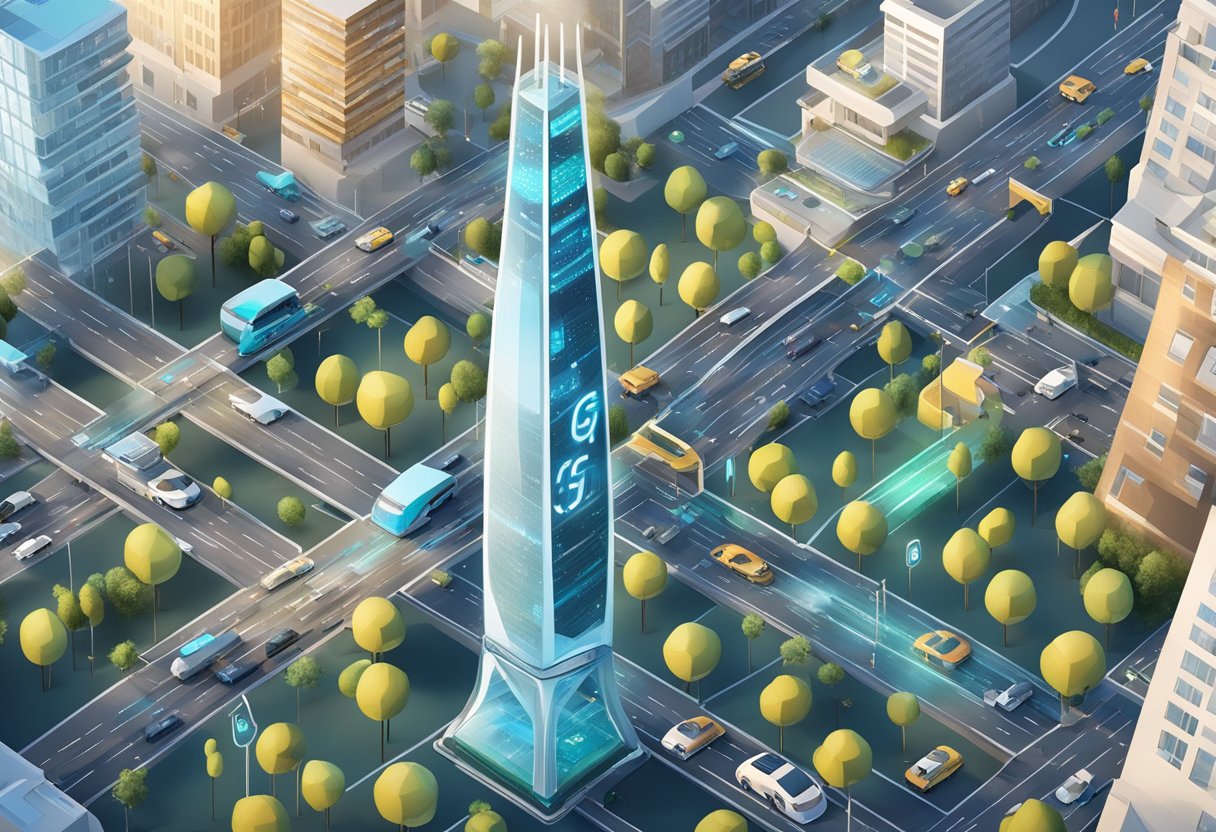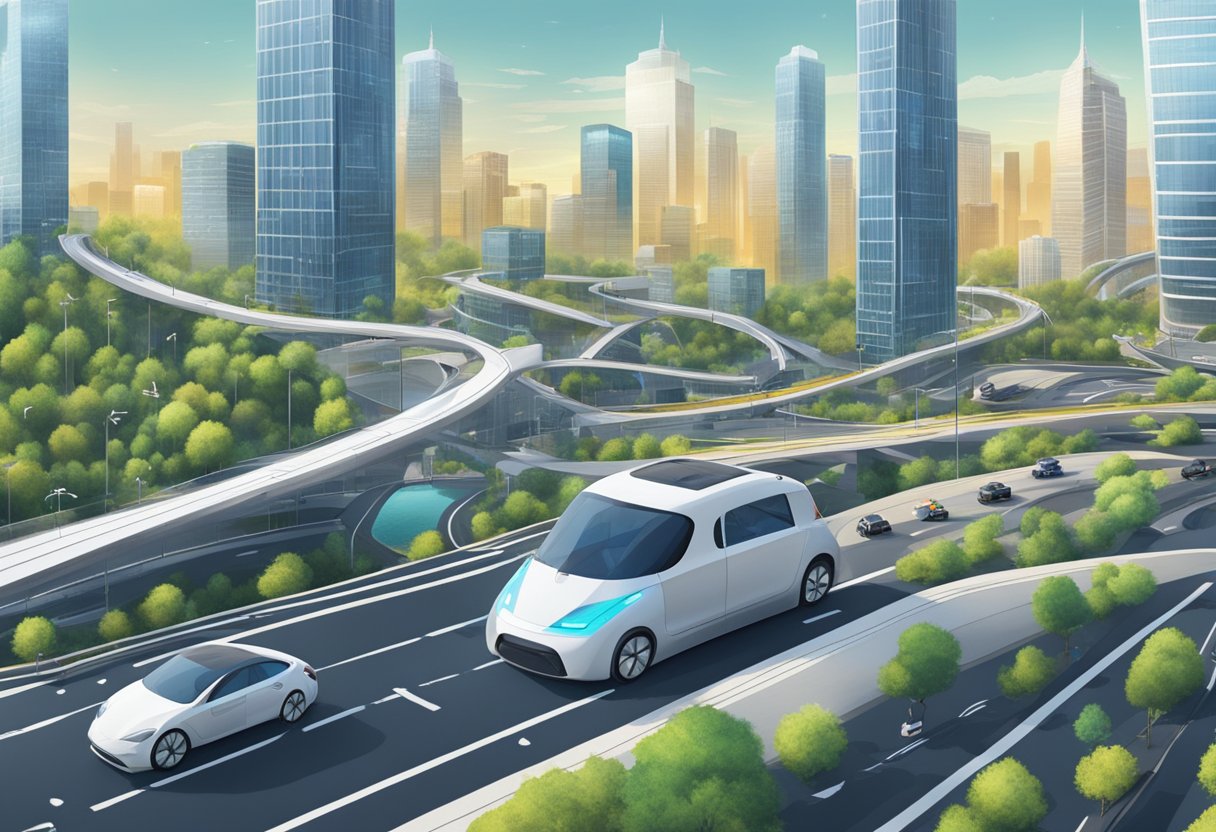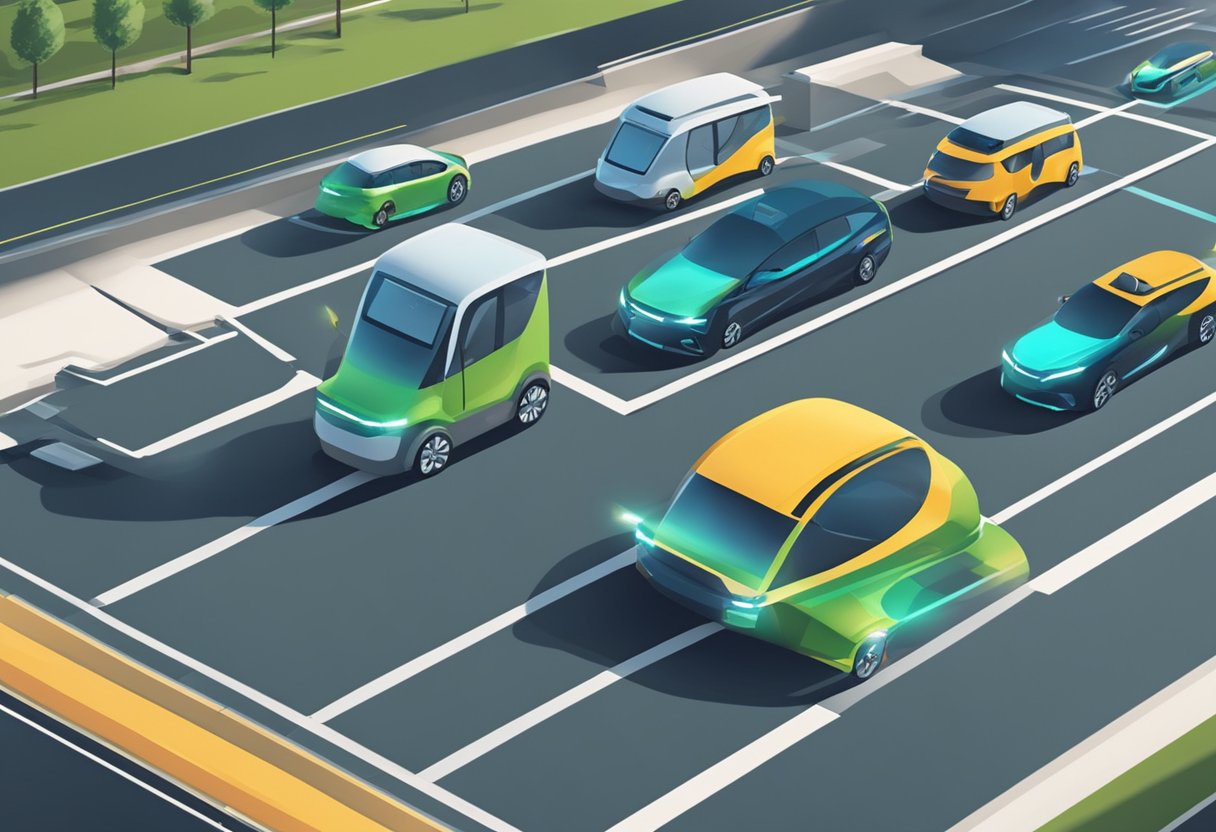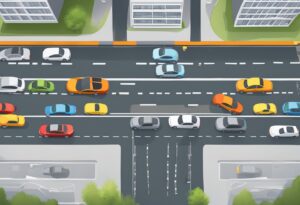The advent of 5G technology is set to transform the automotive industry in a big way. With its high-speed connectivity, low latency, and ability to support a large number of devices, 5G is poised to revolutionize the way autonomous and connected vehicles operate.
The integration of 5G technology with autonomous and connected vehicles is expected to bring about significant changes in the way these vehicles are designed, operated, and experienced by users.
One of the most significant impacts of 5G on autonomous and connected vehicles is the improvement in vehicle safety. With its low latency and high-speed connectivity, 5G enables faster and more accurate communication between vehicles, infrastructure, and other devices, which can help prevent accidents and improve traffic flow.
Additionally, 5G technology can enhance the user experience by enabling advanced features such as augmented reality, real-time navigation, and infotainment services.
Key Takeaways
- The integration of 5G technology with autonomous and connected vehicles is set to transform the automotive industry.
- 5G technology will improve vehicle safety and enhance the user experience by enabling advanced features such as augmented reality, real-time navigation, and infotainment services.
- The business and economic implications of 5G on autonomous and connected vehicles are significant, with the potential to create new revenue streams and business models.
Technological Foundations of 5G and Autonomous Driving
5G Networks and Connectivity
The fifth-generation wireless network, or simply 5G, is a new wireless technology that promises to bring faster and more reliable connectivity to mobile devices. 5G networks have the potential to revolutionize the way we interact with technology, especially in the field of autonomous driving.
Thanks to their high bandwidth and low latency, 5G networks can provide the reliable connectivity that autonomous vehicles need to communicate with each other and with the surrounding infrastructure. This connectivity is essential for enabling real-time data exchange, which is crucial for safe and efficient autonomous driving.
Sensors and Edge Computing
Sensors are a critical component of autonomous driving technology. They provide the vehicle with the data it needs to make informed decisions and navigate the road safely.
With 5G networks and edge computing, sensors can become even more powerful. Edge computing allows data to be processed closer to the source, reducing latency and improving response times.
This means that sensors can provide real-time data to the vehicle’s autonomous driving system, enabling it to make split-second decisions that can mean the difference between a safe journey and a dangerous one.
Software-Defined Vehicles and ADAS
Software-defined vehicles are a new concept in the field of autonomous driving. They are vehicles that rely on software to control their driving behavior, rather than traditional mechanical systems.
This approach allows for greater flexibility and adaptability, as software can be updated and improved more easily than mechanical systems. Advanced driver-assistance systems (ADAS) are a key component of software-defined vehicles, providing the vehicle with the ability to sense its environment and make decisions based on that data.
With the high-speed connectivity provided by 5G networks, ADAS can become even more powerful, enabling the vehicle to make more accurate decisions and react more quickly to changing conditions.
Impact on Vehicle Operations and User Experience
The introduction of 5G technology has brought significant changes to the operations and user experience of autonomous and connected vehicles. This section will highlight some of the impacts of 5G on vehicle operations and user experience by focusing on three key areas: autonomous driving capabilities, safety and security enhancements, and personalized and on-demand mobility.
Autonomous Driving Capabilities
One of the most significant impacts of 5G on autonomous and connected vehicles is the improvement in autonomous driving capabilities. With 5G, vehicles can communicate with each other and with the infrastructure in real-time, which allows for better coordination and decision-making.
This technology enables vehicles to make more informed decisions, such as adjusting their speed or changing lanes, based on real-time traffic information. Additionally, 5G enables vehicles to communicate with other devices, such as traffic lights and road signs, which can further enhance their autonomous driving capabilities.
Safety and Security Enhancements
Another important impact of 5G on autonomous and connected vehicles is the improvement in safety and security. 5G technology enables vehicles to communicate more effectively with each other and with the infrastructure, which can help to prevent accidents and reduce the risk of collisions.
Additionally, 5G technology can enhance the security of autonomous and connected vehicles by providing better encryption and authentication mechanisms. This can help to prevent cyber attacks and ensure the safety of passengers and other road users.
Personalized and On-Demand Mobility
Finally, 5G technology can also enhance the personalized and on-demand mobility experience for users of autonomous and connected vehicles. With 5G, vehicles can provide users with more personalized and tailored services, such as customized entertainment and information.
Additionally, 5G technology can enable on-demand mobility services, such as ride-sharing and car-sharing, to operate more efficiently and effectively. This can provide users with greater convenience and flexibility, while also reducing traffic congestion and improving the overall efficiency of the transportation system.
Business and Economic Implications

Disruption of Traditional Business Models
The introduction of 5G technology in the automotive industry is expected to disrupt traditional business models. The high-speed connectivity provided by 5G will enable new business models such as Mobility as a Service (MaaS), which can potentially replace traditional car ownership.
MaaS allows users to access transportation services on demand, and it is expected to reduce the number of cars on the road, which could have a significant impact on the automotive industry.
Revenue Streams and Cost Considerations
The use of 5G technology in connected and autonomous vehicles is expected to create new revenue streams for automakers. For example, remote diagnostics, predictive maintenance, and online service scheduling are some of the features that can be offered to customers through connected vehicles.
Additionally, the reduction in accidents and the need for roadside assistance can potentially reduce costs for automakers.
However, the implementation of 5G technology in vehicles will also come with additional costs. The cost of integrating 5G technology into vehicles and the infrastructure required to support it will be significant.
Automakers will need to carefully consider the cost-benefit analysis of implementing 5G technology in their vehicles.
Impact on Automotive Supply Chain and Manufacturing
The implementation of 5G technology in the automotive industry will also have an impact on the supply chain and manufacturing processes.
The use of 5G technology will require a significant amount of data to be transmitted and processed in real-time, which will require changes in the manufacturing process.
The use of 5G technology will also require new components to be integrated into the vehicles, which will require changes in the supply chain.
Original equipment manufacturers (OEMs) and automakers will need to work closely with their suppliers to ensure that the necessary components are available and that the manufacturing process is optimized for the use of 5G technology.
The implementation of 5G technology will require significant investments in research and development, which will need to be carefully managed to ensure that the benefits outweigh the costs.
Societal and Environmental Effects

Smart Cities and Intelligent Transportation Systems
The implementation of 5G technology in autonomous and connected vehicles has the potential to revolutionize transportation in smart cities. With the help of intelligent transportation systems (ITS), 5G networks can enable real-time data sharing between vehicles, traffic signals, and other infrastructure elements.
This can lead to more efficient traffic flow, reduced congestion, and improved safety on roads.
Moreover, 5G networks can enable the deployment of smart parking solutions, which can help drivers find available parking spaces quickly and reduce the time spent searching for a spot. This can not only reduce congestion but also lower emissions from vehicles, as they won’t have to circle around looking for parking.
Environmental Impact and Electrification
The electrification of vehicles is a crucial step towards reducing greenhouse gas emissions and combating climate change.
With 5G networks, electric vehicles (EVs) can be charged more efficiently and quickly, thanks to the high-speed data transfer rates and low latency. This can encourage more people to switch to EVs, which can have a significant impact on reducing emissions from the transportation sector.
Furthermore, 5G networks can enable vehicle-to-grid (V2G) technology, which allows EVs to supply energy back to the grid during peak demand periods. This can help balance the grid and reduce the need for fossil fuel-based power plants.
Changes in Vehicle Ownership and Public Transportation
The widespread adoption of autonomous and connected vehicles can have a significant impact on vehicle ownership and public transportation.
With the help of shared mobility services, such as ride-hailing and car-sharing, people may be less inclined to own a vehicle, which can lead to a reduction in the number of cars on the road.
Moreover, 5G networks can enable the deployment of autonomous public transportation systems, such as buses and trains. This can lead to more efficient and reliable public transportation, which can encourage more people to use it instead of driving their cars.
This can not only reduce congestion but also lower emissions from vehicles.
In summary, the implementation of 5G technology in autonomous and connected vehicles can have a significant impact on society and the environment.
With the help of intelligent transportation systems, electrification, and shared mobility services, 5G networks can lead to more efficient and sustainable transportation systems.



